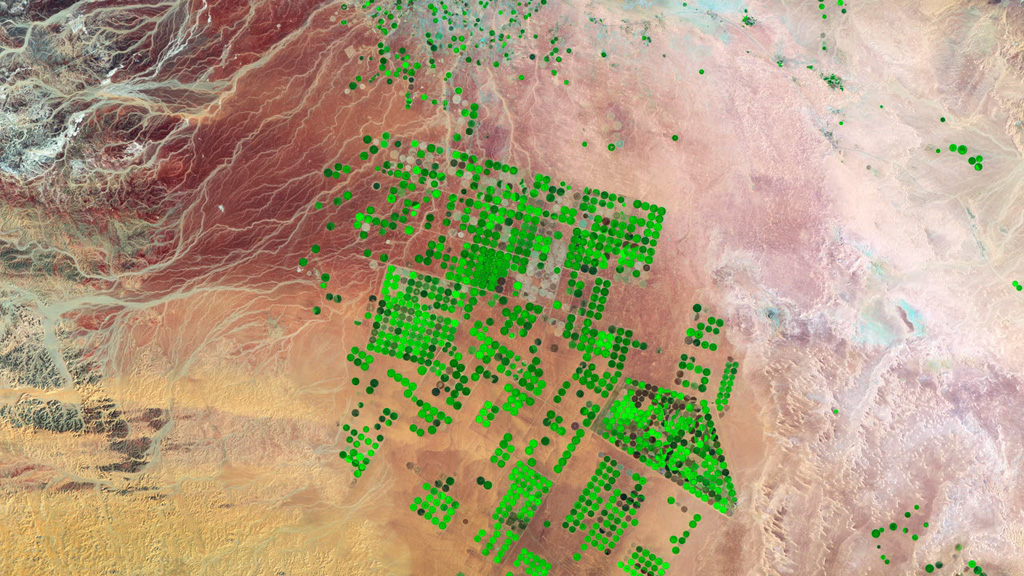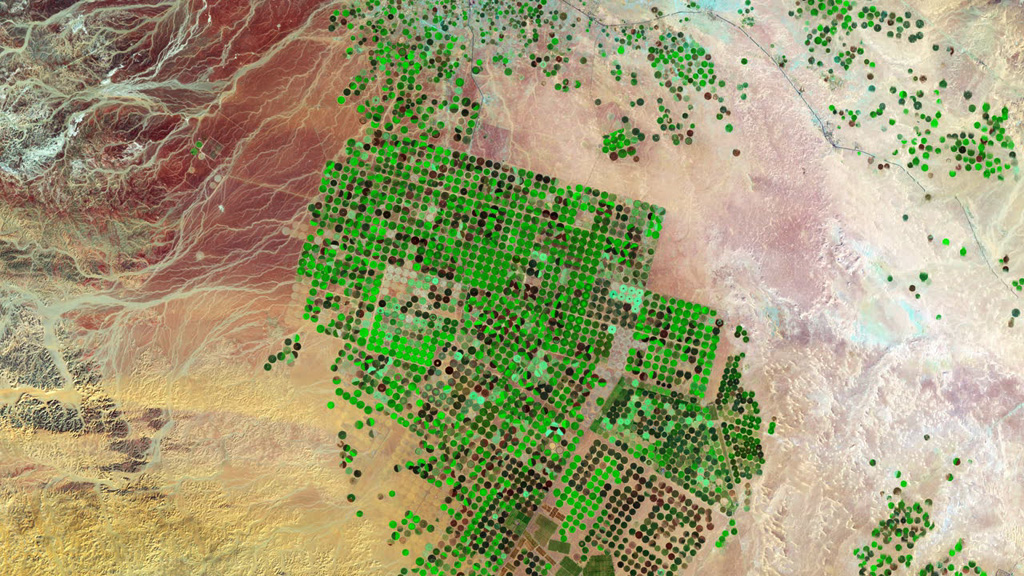Earth
ID: 11845

Since the late 1980s, engineers and farmers in Saudi Arabia have tapped hidden reserves of water to grow crops in the desert. The underground water source was reached by drilling wells through sedimentary rock, as much as a kilometer beneath the desert sands. The plants that rise out of the desert are quenched by water that dates back to the last Ice Age. In a more temperate past about 20,000 years ago, the water filled aquifers that are now buried deep under the sand seas and limestone formations. Rainfall averages just 100 to 200 millimeters per year and usually does not recharge the underground aquifers, making the groundwater a non-renewable source. Although no one knows how much water lies beneath the desert—estimates range from 252 to 870 cubic kilometers—hydrologists believe it will only be economical to pump it for about 50 years. Watch the video to see the evolution of agricultural operations in Saudi Arabia's Wadi As-Sirhan Basin from 1987 to 2012, as seen by USGS-NASA Landsat satellites.



Raising Crops In The Desert




For More Information
Story Credits
Lead Visualizers/Animators:
Robert Simmon (Sigma Space Corporation)
Jesse Allen (Sigma Space Corporation)
Visualizer/Animator:
Mark Malanoski (GST)
Lead Writer:
Mike Carlowicz (Sigma Space Corporation)
Writer:
Aries Keck (ADNET Systems, Inc.)
Robert Simmon (Sigma Space Corporation)
Jesse Allen (Sigma Space Corporation)
Visualizer/Animator:
Mark Malanoski (GST)
Lead Writer:
Mike Carlowicz (Sigma Space Corporation)
Writer:
Aries Keck (ADNET Systems, Inc.)
Please give credit for this item to:
NASA's Earth Observatory
Video and images courtesy of NASA Earth Observatory
NASA's Earth Observatory
Video and images courtesy of NASA Earth Observatory
Short URL to share this page:
https://svs.gsfc.nasa.gov/11845
Keywords:
SVS >> App
NASA Science >> Earth
https://svs.gsfc.nasa.gov/11845
Keywords:
SVS >> App
NASA Science >> Earth







